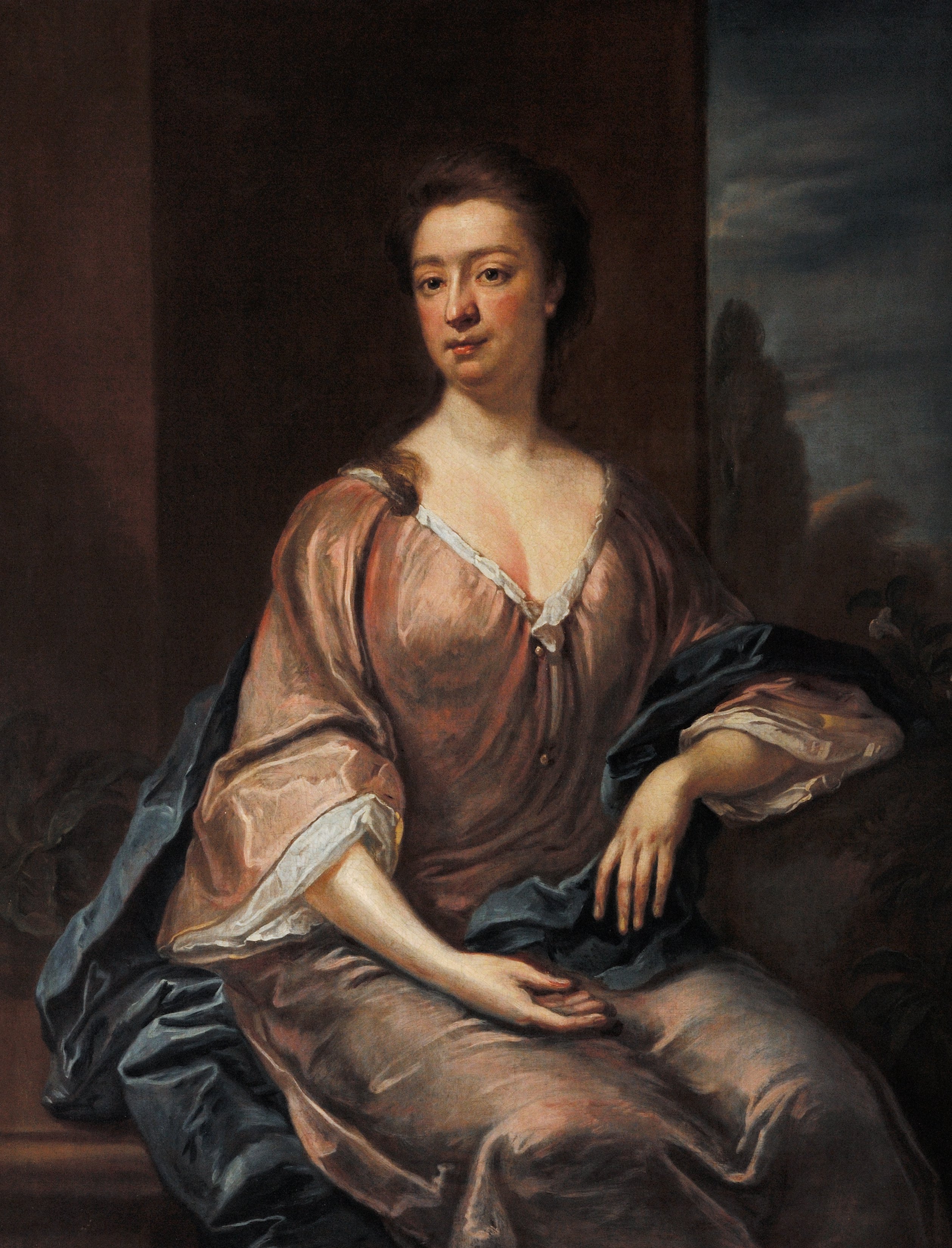9. Portrait of Sarah Holmes, attributed to Enoch Seeman
 Portrait of Sarah Holmes, attributed to Enoch Seeman, H 124.5 x W 100.3 cm, oil on canvas
Portrait of Sarah Holmes, attributed to Enoch Seeman, H 124.5 x W 100.3 cm, oil on canvas
My reference to the royal look, besides an appreciation of Sarah Holmes herself, has been a hint towards the most probable artist. The picture has usually been attributed to Enoch Seeman (or Zeeman) the Younger (1694-1744). He was a member of a painter family from the imperial free city of Danzig (now Gdańsk in Poland), who moved to England with his father in the early eighteenth century, and became a painter to the royal court under George I. Seeman undoubtedly painted a portrait of her husband (also in this college), which looks in many ways similar, and it has sometimes been supposed that the two portraits formed a marriage pair. However, as the conservator Candy Kuhl has pointed out in her report when she restored the picture for us back in 1986, the marriage of William and Sarah Holmes is supposed to have happened late in their lives, probably as late as 1744, the year of Seeman’s death, and indeed Sarah Holmes herself looks rather younger in the picture. It could be an earlier work by Seeman, commissioned for her first marriage to Robert England, or a work of another early eighteenth century artist. A note in the 1929 catalogue suggests Jeremiah Davison, who worked in London as a portrait painter until 1736 when he relocated to Edinburgh, as an alternative. Both have been painters to the royalty and grandest nobility, and the influence of the seventeenth century portrait artists such as Peter Lely or William Wissing is quite obvious.
Be it as it may as regards the artist, there can be no doubt about the lady herself, who looks at us thoughtfully from the canvas. Within the conventions of classicism (the pose owes something to Greek art, rather than just to the court ladies of Lely and Wissing, and the architectural background and the landscape visible through the opening are also hardly Oxonian), we can see the character and power of mind to which we still owe so much. As exam season draws to an end, more slowly than in a normal year, it seems particularly fitting to celebrate a woman whose benefaction has supported the academic work of our students for so long, and especially so in the year in which we celebrate the centenary of the belated admission of women to Oxford degrees in 1920.
View the painting on Art UK here.
 Dr Georgy Kantor, Tutorial Fellow in Ancient History and Keeper of the Pictures
Dr Georgy Kantor, Tutorial Fellow in Ancient History and Keeper of the Pictures